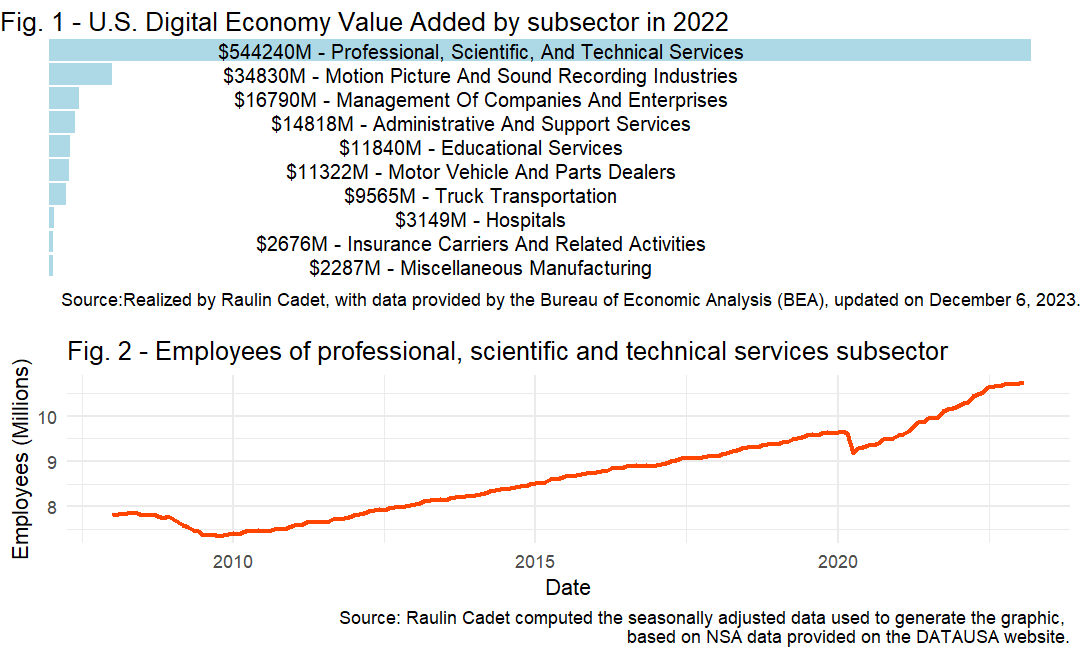US Industries in the Digital Economy
By Raulin Cadet | Published June 20, 2024 | Updated June 20, 2024 | Topics: USA, GDP, Digital economy, Industry, Information, Employment

"The most important thing we can do is inspire young minds and to advance the kind of science, math and technology education that will help youngsters take us to the next phase of space travel."
— John Glenn
The previous post presented the top sectors that profited from the value added by the digital economy. Information was identified as the leading industry in that list. This post, however, focuses on the subsectors.
The graphic of the current post (Fig. 1) illustrates that among these subsectors, Professional, Scientific, and Technical Services has benefited the most from the digital economy. This subsector falls under the Information sector. Professional, Scientific, and Technical Services is consists of: (1) legal services, (2) computer systems design and related services, and (3) miscellaneous professional, scientific, and technical services. Figure 1 of the graphic reveals that these components have profited from the digital economy.
The digital economy can serve as leverage to increase production. That's why I am curious about the employment trends within the Professional, Scientific, and Technical Services subsector. Fig. 2 shows a consistent increase in employment within that subsector over the last decade. Does this suggest that the digital economy contributes to increasing employment? The graphic presented in this blog post does not provide sufficient evidence to support such an affirmation. Nevertheless, for the subsector considered, the digital economy does not alter the trend of increasing employment.
